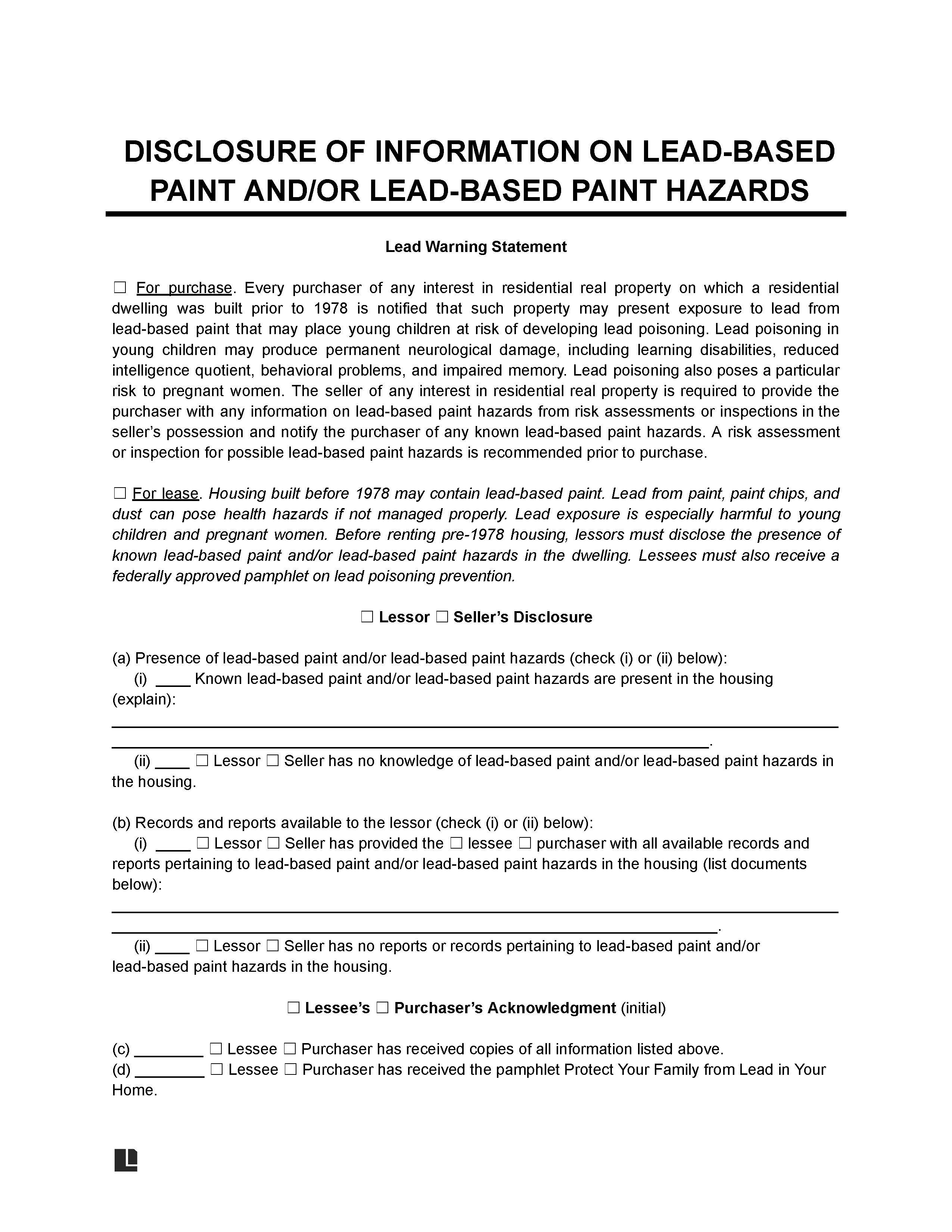A lead-based paint disclosure is a federally mandated form issued by sellers and landlords to potential buyers and renters of residential property built before January 1, 1978, to inform them about lead hazards before committing to a purchase or rental.
This legal document is designed to protect both parties in real estate transactions. Buyers can opt for an independent lead inspection, and sellers, landlords, and agents must ensure compliance.
Legal Considerations
Laws: 42 U.S. Code § 4852d.
Framework: Residential Lead-Based Paint Hazard Reduction Act of 1992 (Title X).
Timeline: The regulation came into full effect on December 6, 1996.
Applicability: Private housing, public housing, federally-owned housing, and housing receiving federal assistance built prior to 1978.
Why Lead Paint Is Illegal: The U.S. Consumer Product Safety Commission (16 CFR 1303) outlawed lead paint due to its hazardous nature when aged. If chipping or cracking is observed in older homes, immediate notification of local authorities is required.
Recordkeeping: Three years after the lease starts.
Failure to disclose: Fines up to $10,000 per violation, potential jail time, and lawsuits from harmed tenants seeking damages.
How to know if built before January 1, 1978: The property owner should contact their local assessor’s office or building department. These offices typically maintain records of property construction, including building permits, which can indicate the year of construction.
Lead Paint Inspection
Landlords or sellers seeking property inspection can use the EPA’s Inspection, Risk Assessment, and Abatement Firms Locator. This tool allows users to search for firms based on criteria such as firm name, categorization (inspection/risk assessment and abatement), location (city, state, zip code), jurisdiction certification, and certification number (NAT).
It’s essential to note that not all states are governed directly by the EPA. States like Alaska, Arizona, Florida, Idaho, Montana, Nevada, New Mexico, New York, South Carolina, South Dakota, and Wyoming, along with certain territories and tribes, fall under EPA administration. For other states, EPA-authorized lead-based paint programs are in place.
Tenants or buyers have the right to a ten-day period during which they can conduct a risk assessment or inspection at their discretion to identify potential lead-based paint hazards.
The Difference Between Inspection and Risk Assessment
Inspection:
- Focuses on detecting the presence and location of lead-based paint.
- Conducted by certified inspectors or risk assessors.
- Helps identify potential lead exposure sources.
- Valuable for pre-purchase evaluations, rental property assessments, or renovation planning.
Risk Assessment:
- Goes beyond detection to assess the type, severity, and location of lead-based paint hazards.
- Performed by certified risk assessors.
- Helps identify the current sources of lead exposure and the severity of the hazards.
- Valuable for situations like controlling lead hazards through mitigation strategies and designing solutions for lead abatement.
If lead-based paint is discovered, two solutions are available:
- abatement (complete elimination of lead hazards) or
- good maintenance (management of potential lead hazards).
Certified risk assessors can help homeowners decide which option is most suitable for their situation.
Lead-Based Paint Disclosure Exemptions
- Houses that were constructed during or after 1978.
- Dormitories, lofts, and efficiencies that lack separate bedrooms.
- Rental units with a lease term of 100 days or less, such as most vacation rentals.
- Houses that were designated for the elderly or the disabled (unless occupied by children).
Lead-Based Paint Disclosure Sample


